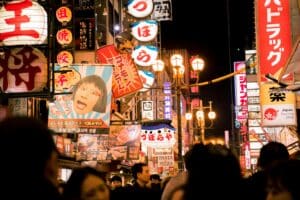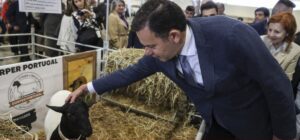Firefighters in ‘dampening down’ phase; expect ‘small reignitions’
The fire that raged on several fronts in Madeira for 11 days is finally under control and in the dampening down phase, albeit small reignitions are to be expected, regional commander of Civil Protection, António Nunes, told Lusa last night.
“The fire is under control, it is now in the aftermath phase. There are still some hot spots and there may be some minor flare-ups, which is normal”, he said
Firefighters will remain on the ground to control the situation – but it is finally time for teams to be ‘relieved’ and the days of high tension to relax.
“The teams are exhausted”, said Nunes, but buoyed by the results, and the fact that the region has been visited by 100% humidity and dense fog, which will be a “great help” to the overall picture.
Nunes put the fire at 98% contained between 8pm and 9pm yesterday evening.
According to the latest report from the European Forest Fire Information System (Copernicus), released on Friday evening, the area burnt totalled 5,045.8 hectares. This differs from earlier reports that attested to ‘over 8,000 hectares’.
Lusa recalls that the fire broke out on August 14 in the mountains of the municipality of Ribeira Brava, gradually spreading to the municipalities of Câmara de Lobos, Ponta do Sol and, via Pico Ruivo, Santana.
Firefighting was hampered by strong winds and high temperatures, but at no point in the combat were there any reports of homes or essential infrastructure having been destroyed.
Some firefighters received assistance due to exhaustion and minor injuries, but there were no other casualties.
PJ Judicial Police are investigating the causes; Madeira’s regional president Miguel Albuquerque insists the nightmare began with an act of arson – and politicians of all colours are calling for a proper evaluation of how this drama came about (as most believe the fire was mismanaged at the start).
PS secretary-general Pedro Nuno Santos said yesterday: “What is important (…) is that with every catastrophe, with every very serious fire, we should find out what happened, because from the information we’re getting, whether from Madeira or from what we’re following on the mainland, it is increasingly clear that things didn’t go well…”
For now, the consequences for the region’s flora and fauna have not been quantified. Conservationists have warned they will be extreme/ devastating – and very little is being said about the dangers of landslides, which are almost certain to follow in any periods of heavy rain.
Earlier this week (while the fires were still raging), in interview with Rfi (Radio France Internationale), president of environmental NGO Quercus’ Madeira branch, Elsa Araújo, pointed the finger at the regional government, saying the way it reacted to this blaze – much of it in areas classified as UNESCO world heritage – shows that political leaders have “no interest in conserving” Madeira’s natural wealth.
“We at Quercus can’t understand how it was only after a week that the regional government activated the plan for the arrival of air resources. There is no explanation for this.
“All Madeirans know that in the area where the fires are raging, aeroplanes are the only way to fight them.
“Anyone with a conscience and responsibility would have asked for air resources to fight the fires” (much earlier), and in doing so, could have saved “a lot of natural heritage”.
Araújo said Quercus knows that “a number of plants in protected and classified Natura 2000 habitats (…) have already been eliminated by the flames.
It is also feared that “other plants, which are unique (…) may already be extinct’.
“We are very concerned about the conservation of the Laurissilva forest. A few years ago, when the fires hit the area of the Ecological Park, in the Pico do Areeiro area, a unique species, the cerveira, burnt down in the fire and became extinct in its natural habitat”, she recalled.
Madeira’s natural heritage brings millions of tourists every year to the island, attracted by the unique fauna and flora. But without proper regulation, the environment cannot be protected.
“The number of tourists visiting Madeira is excessive, it is mass tourism”, Araújo told Rfi. “And we have an aggravating factor, which is that there is no control over access to protected areas.
“Our Azorean neighbours control access to protected areas, this is regulated in the Autonomous Region of the Azores. For many years we have been asking tourists to be careful and respectful when visiting protected areas, particularly if there is a sign that a certain route is forbidden.
“What we ask of tourists is that they respect the signs”, she concluded.
Source material: LUSA/ RFI


























